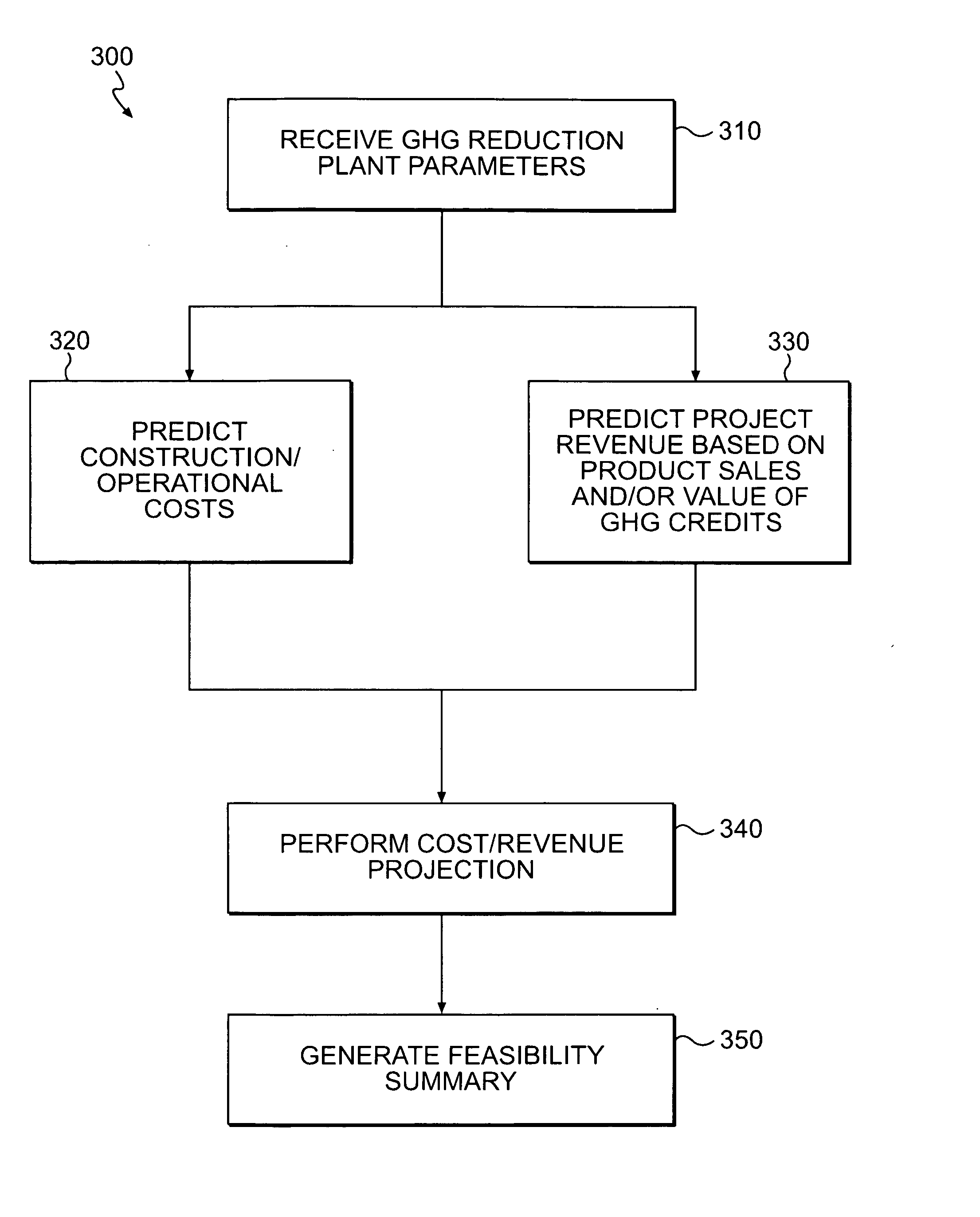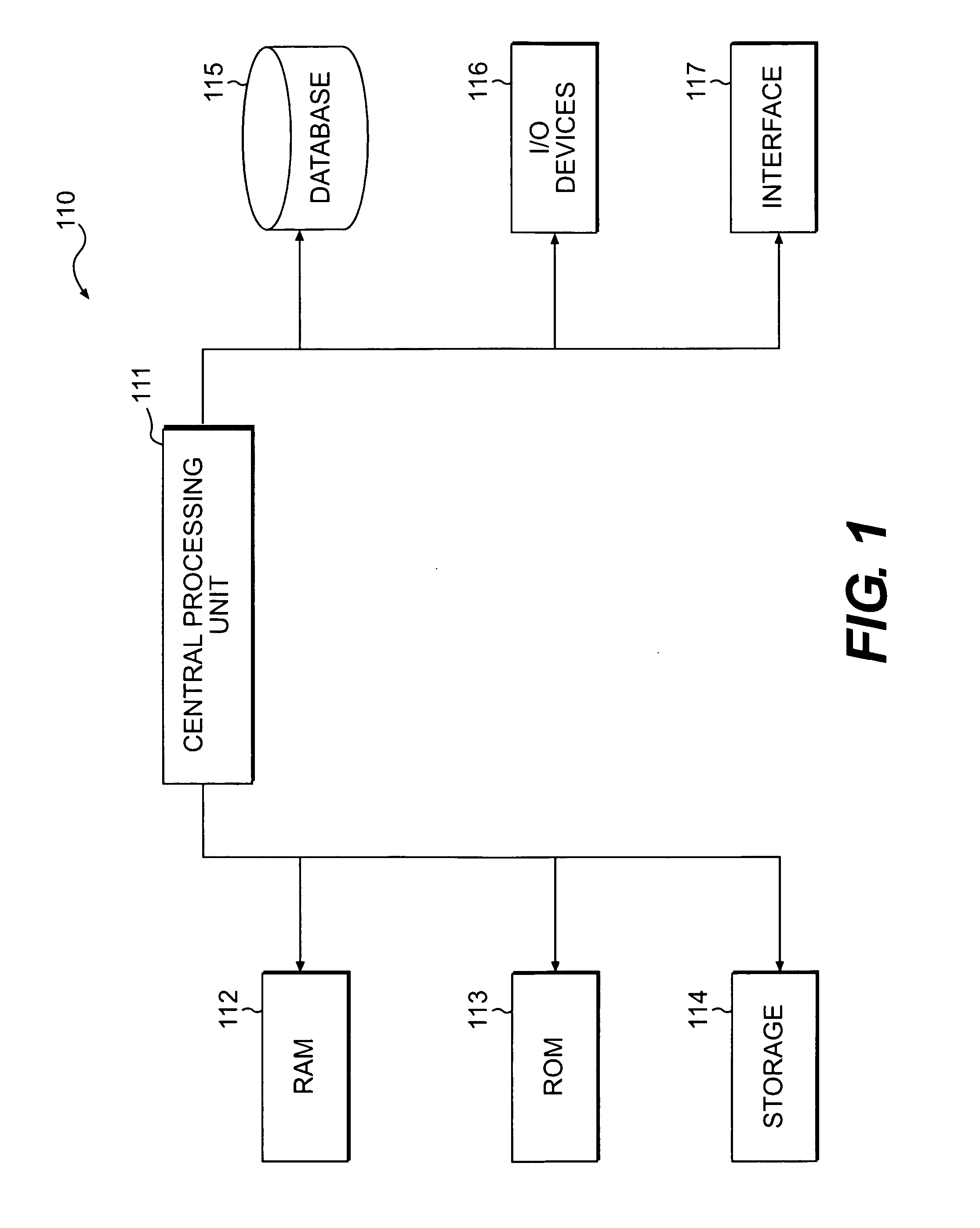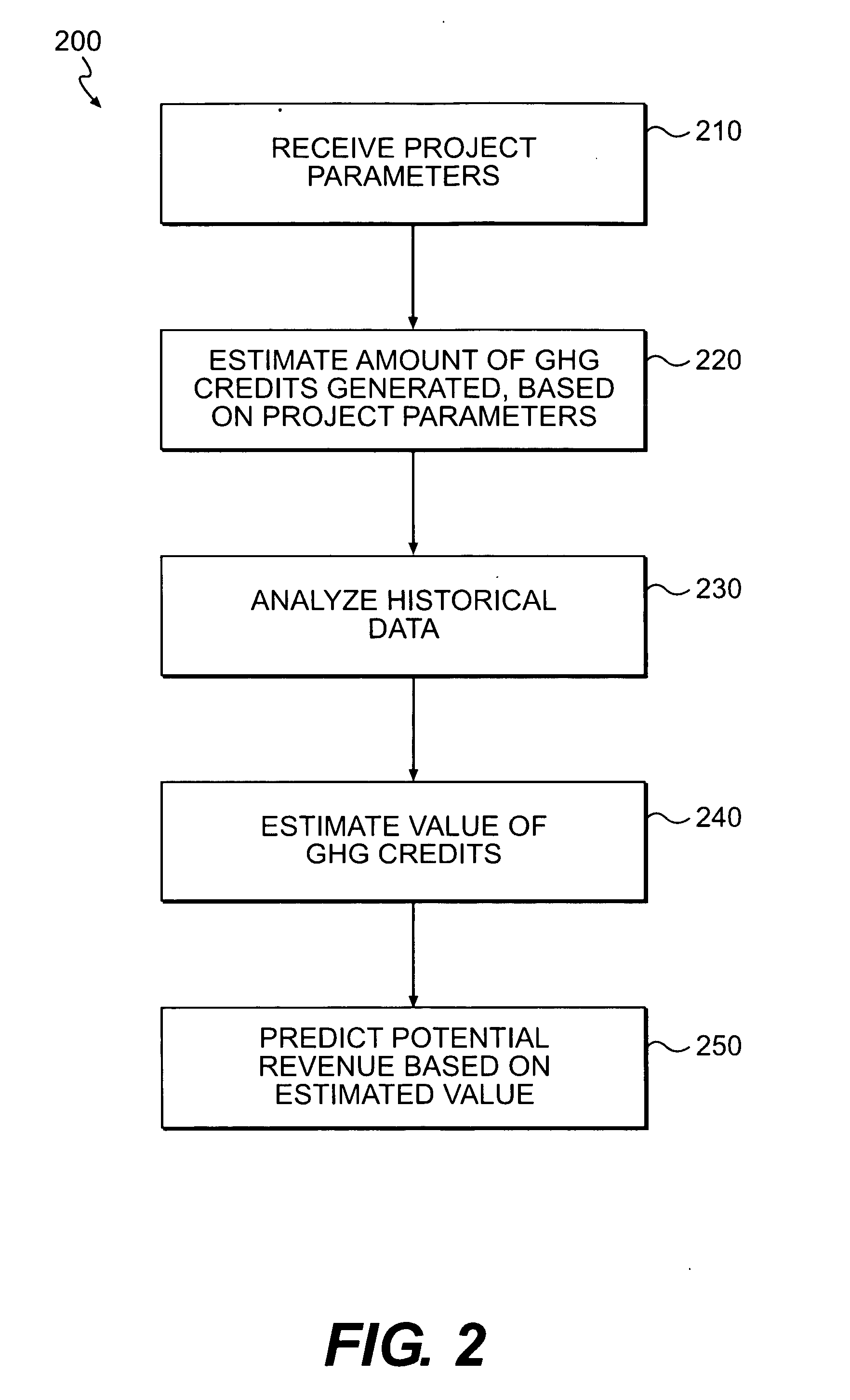Method for determining a future value of greenhouse gas credits
a technology of greenhouse gas credits and future value, applied in the field of methods for determining the value of greenhouse gas credits, can solve the problems of unreliable and/or inefficient entities that rely on estimating future market earnings to evaluate present-day business decisions, and still be inadequate in certain cases
- Summary
- Abstract
- Description
- Claims
- Application Information
AI Technical Summary
Benefits of technology
Problems solved by technology
Method used
Image
Examples
Embodiment Construction
[0015]FIG. 1 illustrates an exemplary system 110 in which principles and methods consistent with the disclosed embodiments may be implemented. As shown in FIG. 1, system 110 may include one or more hardware and / or software components configured to collect, monitor, store, analyze, evaluate, distribute, report, process, record, and / or sort information associated with a proposed GHG reduction project. For example, system 110 may include one or more hardware components such as, for example, a central processing unit (CPU) 111, a random access memory (RAM) module 112, a read-only memory (ROM) module 113, a storage 114, a database 115, one or more input / output (I / O) devices 116, and an interface 117. Alternatively and / or additionally, system 110 may include one or more software components such as, for example, a computer-readable medium including computer-executable instructions for performing a method associated with a proposed GHG reduction project. It is contemplated that one or more ...
PUM
 Login to View More
Login to View More Abstract
Description
Claims
Application Information
 Login to View More
Login to View More - R&D
- Intellectual Property
- Life Sciences
- Materials
- Tech Scout
- Unparalleled Data Quality
- Higher Quality Content
- 60% Fewer Hallucinations
Browse by: Latest US Patents, China's latest patents, Technical Efficacy Thesaurus, Application Domain, Technology Topic, Popular Technical Reports.
© 2025 PatSnap. All rights reserved.Legal|Privacy policy|Modern Slavery Act Transparency Statement|Sitemap|About US| Contact US: help@patsnap.com



